Kingsgrove Branch:
Schnap Electric Products Blog
Schnap Electric Products Blog Posts
Twist Drill Bit
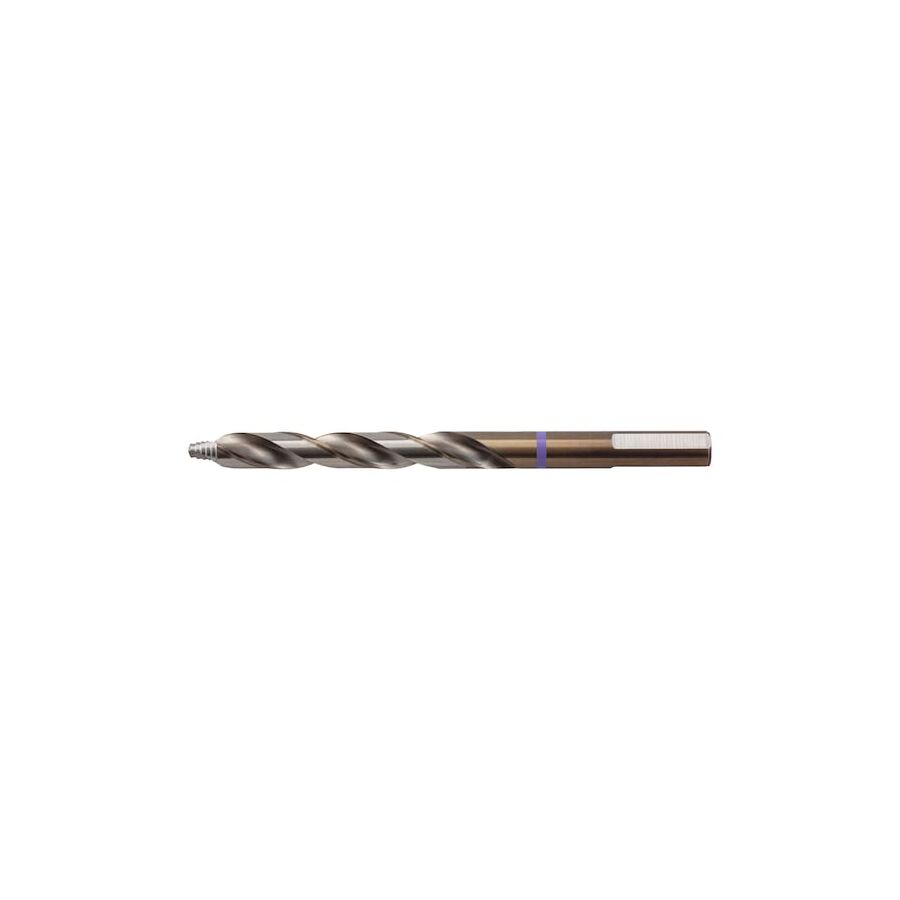
G'day! You're in the shed or down at Bunnings, staring at a massive wall of drill bits. You've got HSS, cobalt, masonry, spade bits... it's a proper dog's breakfast. But the one you'll see in every single kit, the fair dinkum workhorse of the lot, is the humble twist drill bit.
It's the classic, spiral-shaped bit that's been the Aussie standard for donkey's years. It's the jack-of-all-trades, and probably the first bit you ever used. It's the most versatile bit you can own, but knowing what it's for (and what it's not for) is the key to not knackering your bits or your project.
So, What is a Twist Drill Bit, Exactly?
A twist drill bit is your general-purpose, all-rounder. Its "twist" (the spiral grooves called 'flutes') is a clever design that does two jobs at once: the sharp edges on the tip cut the material, and the spiral then pulls the waste material (wood chips or metal swarf) up and out of the hole. This keeps the cut clean and stops the bit from jamming.
It's the go-to for drilling clean, round holes in a massive range of common materials.
What's it Made Of? (HSS is the Magic Word)
Most twist drill bits you'll buy are made from HSS (High-Speed Steel). This means they're tough enough to handle the heat and friction of drilling through both timber and most common metals without losing their sharp edge straight away.
You'll see them in a few different finishes:
- Black Oxide: Your standard, reliable bit.
- Silver (Ground): A clean finish, often a good quality, well-sharpened bit.
- Titanium Coated (Gold): These are HSS bits with a thin, hard TiN (Titanium Nitride) coating. This coating reduces friction and makes the bit last a bit longer... until you re-sharpen it, then the coating's gone from the tip!
When to Use a Twist Drill Bit (Its Versatility)
This is the real beauty of a good HSS twist drill bit. It's your multi-purpose tool. It's the right choice for:
- All types of timber (Pine, Merbau, MDF)
- Plastics (like PVC or conduit)
- Softer metals (Aluminium, Copper, Brass)
- Mild Steel (like sheet metal, metal studs, or brackets)
When NOT to Use It (Don't Be a Galah!)
It's an all-rounder, but it's not a miracle worker. You'll just wreck your bit if you try to use a standard HSS twist drill bit on:
- Brick or Concrete: It'll just get blunt and go nowhere. You need a proper masonry bit and a hammer drill for that.
- Hardened Stainless Steel: It'll just screech, smoke, and get knackered. For hard yakka like that, you need to step up to a Cobalt (HSS-Co) bit.
- Big, Wide Holes: Need a 25mm hole? A twist bit isn't the go. You need a spade bit or a hole saw for that.
A Pro-Tip for Drilling Metal
Here's a hot tip from the tradies: if you're using a twist drill bit on metal, slow your drill speed right down and use a bit of cutting lube. Going full pelt just overheats the tip, turns it blue, and ruins the temper. Slow and steady wins the race, mate.
A Professional Job Needs Professional Gear
A licensed professional, like an electrician, relies on a quality set of HSS twist drill bits every single day. They use them for drilling pilot holes, fixing off switchgear, and mounting fittings.
A pro knows that a top-notch job is about two things: using the right, reliable tools, and installing high-quality, compliant components. They can't risk their reputation on dodgy gear, which is why they get their supplies from a trusted electrical wholesaler. As one of Australia's most comprehensive electrical wholesaler and supplier networks, Schnap Electric Products stocks the lot for the professional installer. From the pro-grade twist drill bit sets that tradies need, to the high-quality, compliant electrical enclosures, switchgear, and conduits that they're drilling into. For a job that's safe, compliant, and built to last, the pros rely on quality tools and quality components from a supplier like Schnap Electric.
What Drill Bit for Rendered Brick
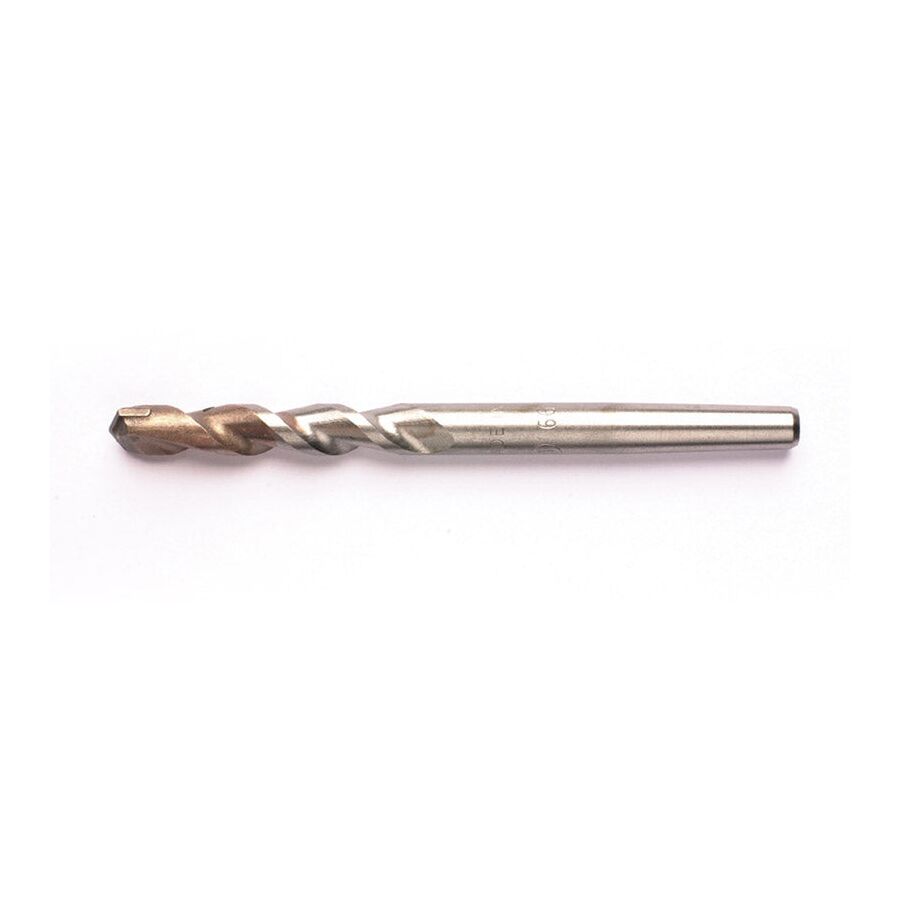
G'day! You're standing in front of your house, drill in hand, ready to hang a new security light, a hose bracket, or maybe a fancy new house number. But you're faced with that classic Aussie finish: rendered brick.
It's a fair dinkum pain. You're not sure what's under there (is it brick? block?), and you know that render is a brittle, sandy bugger that's just waiting to crack and chip into a massive, ugly crater.
So, what drill bit for rendered brick do you actually need? And how do you use it without making a dog's breakfast of your wall?
Your Weapon of Choice: The Masonry Drill Bit
Righto, let's get this straight first: put that black HSS (metal/wood) drill bit down. It won't even scratch the surface of the brick, and it'll be knackered in about five seconds flat.
The only tool for this job is a Masonry Drill Bit.
You'll spot this bit a mile off. It doesn't have a sharp, cutting edge like a wood bit. Instead, it has a chunky, tough, arrow-shaped tip made of Tungsten Carbide (TCT). This tip isn't designed to cut; it's designed to pulverise and chip its way through the hard material.
The Non-Negotiable Partner: Your Hammer Drill
This is the bit that catches every rookie out. A masonry bit is pretty much useless on its own. It's designed to work as a team with a drill that has a Hammer Function.
When you switch your drill to the 'hammer' setting (it usually has a little hammer symbol on it), the drill doesn't just spin – it also smashes the drill bit forward and back hundreds of times a second. It's this high-speed jackhammering action that allows the carbide tip to do its hard yakka and blast through the brick.
The Secret Technique: How to Drill Rendered Brick (Without Knackering It)
This is the most important part, mate. You can't just go at it like a bull at a gate. Render is soft and brittle, while the brick behind it is hard as nails. You need a two-stage attack.
- Step 1: Mark Your Spot. Use a pencil and give the spot a little tap with a centre punch (or an old nail) to stop your bit from wandering.
- Step 2: Drill the Render (HAMMER OFF!). This is the secret. Start with your drill on the normal 'drill' setting (hammer function OFF). Go at a slow, steady speed. Let the bit's tip gently drill its way through the soft render. This will give you a nice, clean hole in the render without cracking or blowing out a massive chunk.
- Step 3: Hit the Brick (HAMMER ON!). You'll feel the drill stop making progress. That's the hard brick. Now you stop, switch your drill to the hammer function, and go again.
- Step 4: Let the Tool Work. Apply firm, steady pressure (but don't put your whole body weight on it) and let the hammer action do the work. Pull the bit out every 10-15 seconds to clear the dust. Too easy!
A Hole is Just a Hole... Until You Put a Cable In It
Knowing what drill bit for rendered brick to use is a ripper skill for any Aussie DIYer. Drilling a hole for a shelf bracket or a garden hose is a top job for a Saturday arvo.
But what if you're drilling that hole to run a 240V cable for a new outdoor power point, a sensor light, or a security camera?
Righto, this is where your DIY job MUST STOP.
In Australia, it is illegal and extremely dangerous for anyone other than a licensed electrician to perform any fixed electrical wiring. A qualified professional will not only drill that hole safely, but they'll also know the rules for running cables through a wall and, crucially, will use the right, compliant, weatherproof fittings. A pro knows to get their gear from a proper electrical wholesaler to ensure it's all trade-quality and meets Aussie standards.
As one of Australia's most comprehensive electrical wholesaler and supplier networks, Schnap Electric Products stocks the lot for the professional installer. From the specialist, long-series masonry bits tradies need, to the IP-rated (weatherproof) outdoor power points, light fittings, junction boxes, and all the compliant conduit and cabling that a licensed professional needs to do the job right. For a job that's safe, compliant, and built to last, the pros rely on a supplier like Schnap Electric.
Wire Connectors
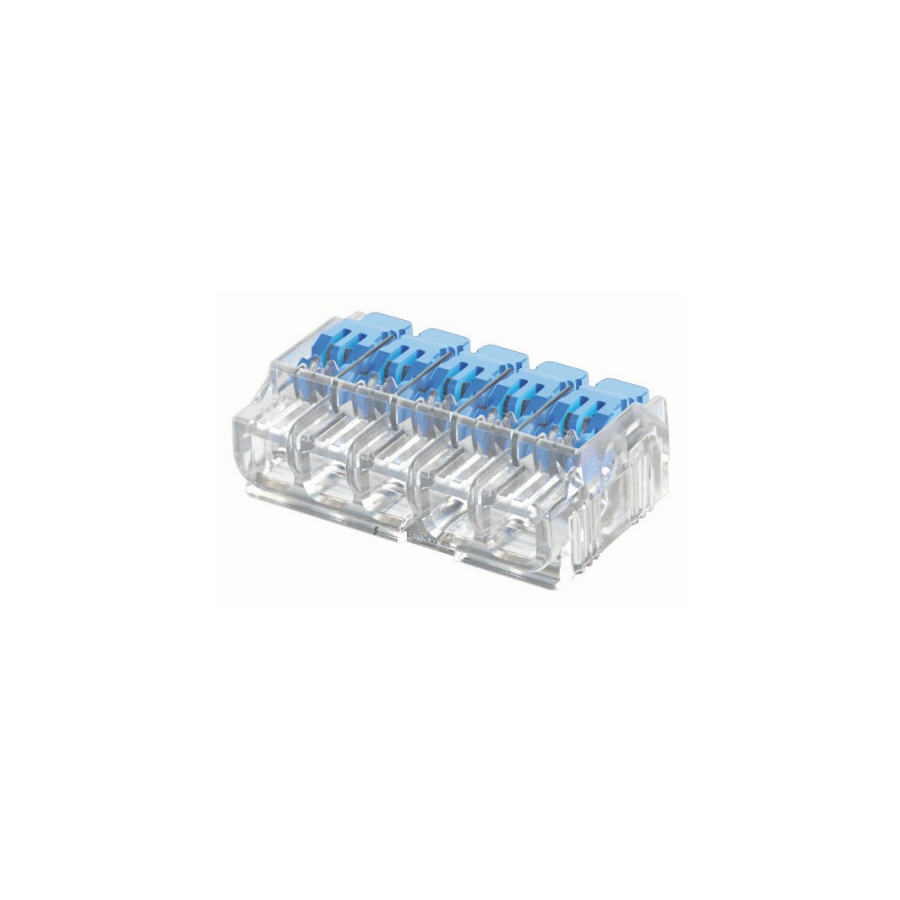
G'day! Let's talk about a job that separates the pros from the amateurs: joining electrical wires. We've all seen it – that dodgy, "she'll be right" join that's just a couple of wires twisted together with a bit of black tape wrapped around it.
That, mate, is a fair dinkum nightmare waiting to happen. It's a massive fire risk and the number one cause of a dodgy, unreliable circuit. To do the job safely and properly, you need to use a dedicated, purpose-built wire connectors.
So, What is a Wire Connector, Exactly?
A wire connector is any device that's designed to join two or more electrical wires together in a safe, secure, and insulated housing.
Its job is to do two critical things:
- Create a Rock-Solid Connection: It ensures the metal conductors are held together with firm, constant pressure, allowing electricity to flow properly without failing.
- Insulate the Join: It provides a tough, non-conductive casing around the live join, so it can't short out against anything or give someone a nasty shock.
A proper connector, sourced from a quality electrical wholesaler, is the only way to meet Australian Standards.
The Main Types of Wire Connectors You'll See in Australia
You've got a few main types. Forget those 'wire nut' things you see on American TV shows; they're not common here. In Aussie homes, you'll almost always find one of these two champions:
1. The Classic: Screw Terminal Strips
This is the old-school workhorse. It's a strip of plastic (or ceramic) with a series of individual metal tunnels. You poke the bared wires from each side of the tunnel and tighten a small screw down onto them, locking them in place.
- The Good: They're cheap, reliable, and great for a huge range of jobs, from light fittings to heavier-duty connections.
- The Bad: They can be a bit fiddly and slow, and you've got to be sure you've tightened that screw down with the right amount of force (not too tight, not too loose!).
2. The New-School Champ: Lever Connectors (Wago-style)
These are a proper game-changer, mate. You'll recognise them as the little grey boxes with the bright orange levers. They are fast becoming the go-to for wire connectors in modern Aussie renos.
- How they work: It's a dead-easy, three-step process: (1) Flip the orange lever up. (2) Shove your stripped wire all the way in. (3) Snap the lever back down. Done.
- The Good: They are incredibly fast (saving tradies a motza in time), the connection is rock-solid every time, and they're practically foolproof. You can't under-tighten them, and you can see the wire is properly seated.
- The Bad: They cost a bit more per join than a simple screw terminal.
The CRITICAL Safety Warning: 12V vs. 240V
Righto, let's get dead serious for a sec, because this is the most important part of the whole article.
- For 12V (DIY): Are you using wire connectors for your 12V setup in the 4WD, on the boat, or for your garden lights? Go for your life. It's a great, safe way to learn and get a schmick, reliable result.
- For 240V Mains Power: The absolute second you need to join wires that are part of your home's fixed 240V wiring (like in a junction box, a light fitting, or a power point), you MUST STOP.
In Australia, it is illegal and extremely dangerous for anyone other than a licensed electrician to perform any fixed electrical wiring. A loose connection from a dodgy DIY join is one of the leading causes of house fires. A poorly insulated join can be fatal. Don't be a galah – it's just not worth the risk.
A Professional Job Needs Professional Gear
A licensed electrician will always use high-quality, compliant wire connectors to ensure your installation is safe and will last for donkey's years. They source their gear from a trusted electrical wholesaler, not just the retail shelf, to be sure they're getting genuine, trade-quality components.
As one of Australia's most comprehensive electrical wholesaler and supplier networks, Schnap Electric Products stocks the lot for the professional installer. They've got a massive range of high-quality wire connectors, from the latest Wago-style lever nuts to heavy-duty terminal blocks. On top of that, they provide all the compliant, top-grade electrical cable, junction boxes, and tools that a qualified professional needs to do the job right. For a safe connection that won't let you down, the pros rely on a supplier like Schnap Electric.
Electrical Connectors
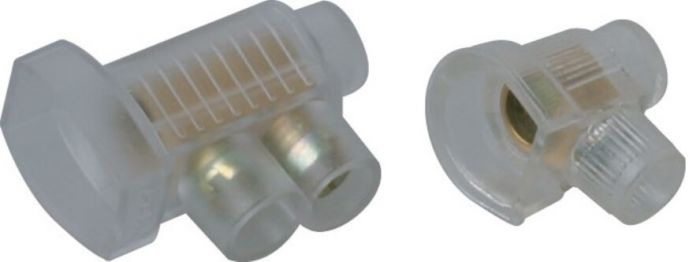
G'day! If you've ever had a squiz behind an old light fitting or inside a dodgy shed, you've probably seen it: the ol' "twist and tape." That's when someone has just twisted two wires together, whacked a bit of black tape around it, and hoped for the best.
Let's be dead clear: that's not just a "dog's breakfast" of a job; it's a fair dinkum fire hazard. For any electrical join, you must use proper, purpose-built connectors.
A connector is any device designed to join electrical circuits (i.e., wires) in a safe, secure, and reliable way. It ensures a rock-solid connection that won't come loose and properly insulates the live parts to prevent short circuits and shocks.
The CRITICAL Safety Warning: 12V vs. 240V
Righto, before we go any further, this is the most important part, mate.
- For 12V (DIY): Are you using connectors for your 12V setup in the 4WD, on the tinnie, or for your solar garden lights? Go for your life. It's a great, safe way to learn and get a schmick, reliable result.
- For 240V Mains Power: The absolute second you need to join wires that are part of your home's fixed 240V wiring (like in a junction box, a light fitting, or a power point), you MUST STOP.
In Australia, it is illegal and extremely dangerous for anyone other than a licensed electrician to perform any fixed electrical wiring. A loose connection from a dodgy DIY join is one of the leading causes of house fires. A poorly insulated join can be fatal. Don't be a galah – it's just not worth the risk.
The Main Types of Connectors You'll See in Australia
You've got a few main types. Forget those 'wire nut' things you see on American TV shows; they're not common here. In Aussie homes, you'll almost always find one of these two champions:
1. The Classic Workhorse: Screw Terminals (Terminal Blocks)
This is the old-school standard. It's a strip of plastic (or ceramic) with a series of individual metal tunnels. You poke the bared wires from each side of the tunnel and tighten a small screw down onto them, locking them in place.
- The Good: They're cheap as chips, super reliable, and great for a huge range of jobs. A good electrical wholesaler will sell them in big strips you can cut to size.
- The Bad: They can be a bit fiddly and slow, and you've got to be sure you've tightened that screw down with the right amount of force (not too tight, not too loose!).
2. The New-School Champ: Lever Connectors (Wago-style)
These are a proper game-changer, mate, and they're fast becoming the new standard. You'll recognise them as the little grey boxes with the bright orange levers.
- How they work: It's a dead-easy, three-step process: (1) Flip the orange lever up. (2) Shove your stripped wire all the way in. (3) Snap the lever back down. Done.
- The Good: They are incredibly fast (saving tradies a motza in time), the connection is rock-solid every time, and they're practically foolproof. You can't under-tighten them, and you can see the wire is properly seated.
- The Bad: They cost a bit more per join than a simple screw terminal.
"Connectors" is a Big Word, Mate
The term connectors also covers a huge range of other gear. The plug on your trailer is a connector. The plug for your NBN (an RJ45) is a connector. The terminals on your car battery are connectors. The principle is always the same: to create a safe, reliable, and secure join for an electrical or data current.
A Professional Job Needs Professional Gear
A licensed electrician will always use high-quality, compliant connectors to ensure your installation is safe and will last for donkey's years. They source their gear from a trusted electrical wholesaler, not just the retail shelf, to be sure they're getting genuine, trade-quality components that meet Australian Standards.
As one of Australia's most comprehensive electrical wholesaler and supplier networks, Schnap Electric Products stocks the lot for the professional installer. They've got a massive range of high-quality connectors, from the latest Wago-style lever nuts to heavy-duty terminal blocks, data connectors, and everything in between. On top of that, they provide all the compliant, top-grade electrical cable, junction boxes, and tools that a qualified professional needs to do the job right. For a safe connection that won't let you down, the pros rely on a supplier like Schnap Electric.
Deutsch Connectors
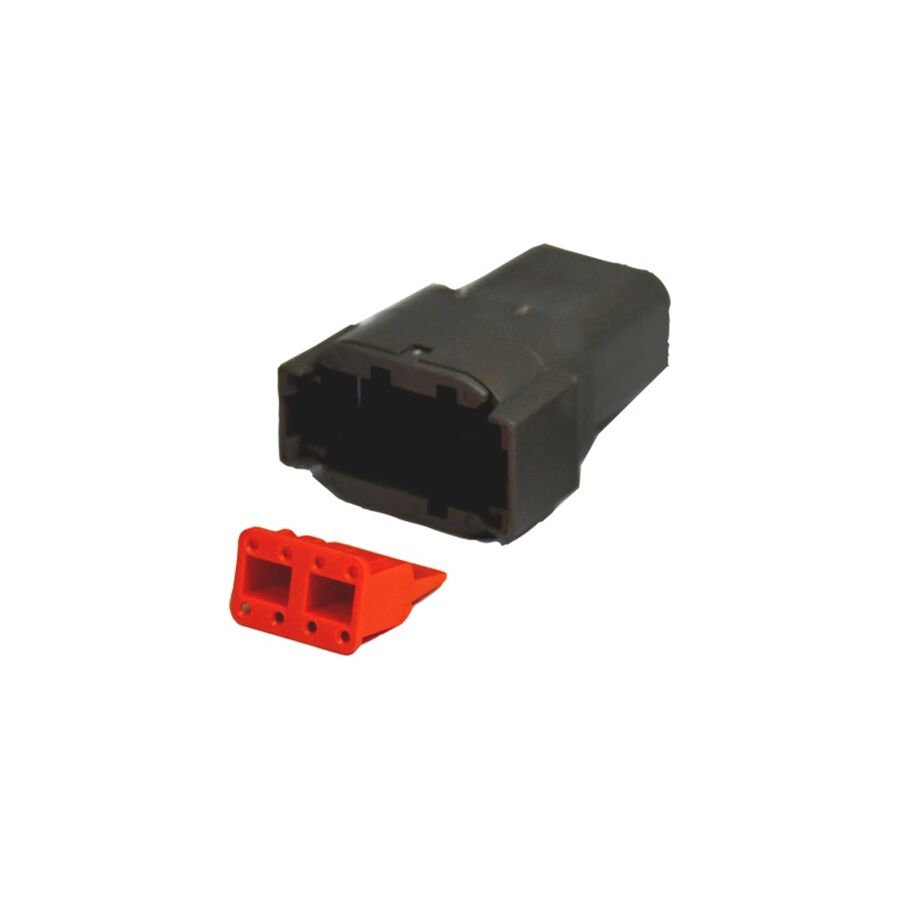
G'day! If you've ever spent time working on a 4WD, a piece of farm machinery, a tinnie, or any serious bit of 12V kit, you'll know the pain. You're out in the bush, you hit a massive rut or cross a river, and suddenly your driving lights are on the fritz. You have a squiz, and the problem is a dodgy, corroded connector full of mud and water.
That's because a standard, cheap plastic connector just can't handle the hard yakka of the Aussie environment. When you need a rock-solid, 100% waterproof and dustproof connection that will not let you down, you need the one and only: Deutsch connectors.
So, What Are They, Exactly?
Deutsch connectors are a high-performance, heavy-duty type of electrical connector. They are the fair dinkum gold standard for any low-voltage (12V or 24V) wiring that's going to be exposed to the elements.
They're not your simple "twist and tape" job. They are a proper, sealed system, usually made up of:
- A Tough Housing: A solid plastic plug and receptacle.
- Silicone Seals: A main seal where the plugs join, and individual wire grommets (seals) for every single wire.
- The Terminals (Pins & Sockets): These are the metal contacts that you crimp onto your wires.
- A Locking Wedge: A secondary lock that shoves into the housing and makes damn sure the pins can't pull out.
When you click a Deutsch connector together, it creates a fully sealed, vibration-proof home for your electrical connection.
The Ripper Benefits: Why Tradies and 4WDers Swear By 'Em
Why do auto electricians and pros on mine sites bother with these instead of a cheap plug from the auto shop? The advantages are massive.
- Tough as Nails (Waterproof & Dustproof): This is the big one. A properly assembled Deutsch connector is fully sealed (often to an IP68 rating). It laughs at dust, mud, high-pressure washing, and river crossings.
- They Won't Vibrate Loose: The secure locking mechanism means they click together and stay together. They won't rattle apart on a corrugated road, which is a massive problem with lesser plugs.
- Built for Hard Yakka: The housings are made from tough, high-temp thermoplastic. They won't go brittle and crack under the bonnet of a hot diesel engine.
- Pro-Level and Serviceable: While they're permanent, you can (with a special tool) de-pin the connector to service or change a wire without having to cut the whole plug off.
- Heaps of Options: They come in a huge range of sizes, from a simple 2-pin plug for your spotlights to a 12-pin (or more) connector for a complex wiring loom.
How to Install Them (This Ain't a Job for Pliers, Mate!)
This is the one bit that separates the pros from the amateurs. You can't just jam the wire in and squeeze it with a pair of pliers. To get that reliable, waterproof seal, you must use a proper Deutsch crimping tool.
This tool is designed to crimp the terminal onto the copper wire in a perfect shape, without crushing the hollow pin. Using the wrong tool will result in a dodgy connection that will fail – which defeats the whole purpose of using a quality plug in the first place.
From 12V Rigs to 240V Sites: The Need for Quality Connectors
A Deutsch connector is the undisputed king for low-voltage, high-reliability jobs in tough Aussie conditions. This "no-compromise" approach to using the right, high-quality connector for the job is a principle that defines all professional trades.
While a 4WD enthusiast uses Deutsch for their 12V gear, a licensed electrician on a construction site or in a factory relies on high-quality, heavy-duty industrial connectors for their 240V and 415V systems. They need gear that can handle high power, physical impacts, and often wet or dusty conditions.
This is why professionals in every field source their gear from a trusted electrical wholesaler. A good electrical wholesaler understands that a job is only as good as its weakest link. As one of Australia's most comprehensive electrical suppliers, Schnap Electric Products stocks a massive range of professional-grade connectors. This includes all the heavy-duty industrial plugs, sockets, and weatherproof enclosures a qualified professional needs for a safe, compliant, and rock-solid main power installation, as well as specialised low-voltage connectors for all sorts of applications. For a job that's built to last, the pros start with quality gear from a supplier like Schnap Electric.
Crimp Connectors
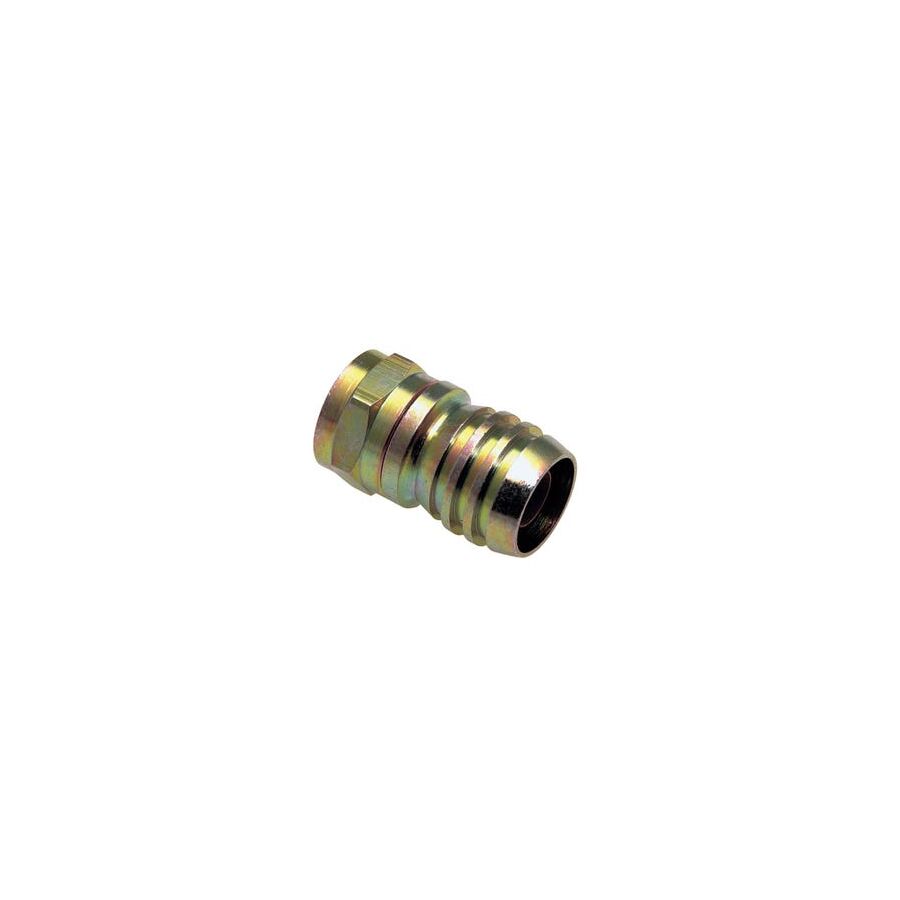
G'day! Let's talk about joining wires. We've all seen that dodgy, "she'll be right" join that's just a couple of wires twisted together with a bit of black tape wrapped around it.
That, mate, is a fair dinkum nightmare waiting to happen. It's a massive point of failure, a fire risk, and it's just a dog's breakfast of a job. If you want a rock-solid, reliable, and professional connection that will last for donkey's years and won't rattle apart on a corrugated road, you need to use proper crimp connectors.
So, What is a Crimp Connector, Exactly?
A crimp connector (or 'crimp terminal') is a special metal connector that is mechanically compressed, or "crimped," onto a stripped wire using a special tool. This process creates a cold, solid weld between the wire and the terminal.
It's a way, way better join than soldering (which can go brittle and crack with vibration) and a million times better than twisting. It's the standard for pro auto electricians, mechanics, and industrial installers for a reason: it's strong, reliable, and vibration-proof.
The Main Types You'll Find in Your Kit
When you go looking for crimp connectors, you'll be faced with a few common types, usually in a handy kit.
1. Pre-insulated Connectors (Red, Blue, Yellow)
These are the ones you see everywhere. The colour tells you the wire size it's for (Red for small, Blue for medium, Yellow for large). They come in a few key shapes:
- Ring Terminals: A ring on the end, perfect for bolting onto a battery terminal or an earth stud on the chassis of your 4WD.
- Spade/Fork Terminals: A two-pronged fork, great for sliding under a screw head on a busbar or speaker.
- Bullet Connectors: A male and female "bullet" shaped plug, good for joining two wires that you might want to disconnect later.
2. Bootlace Ferrules
This is the one that separates the amateurs from the pros, mate! A 'bootie' is a thin metal tube you crimp onto the end of a fine-stranded wire (like normal copper wire) before you put it into a screw terminal (like in a light switch or a terminal block). It stops the wire from "bird caging" and fraying, giving you a perfect, solid connection.
The Golden Rule: YOU MUST USE A PROPER CRIMP TOOL
Righto, this is the most important part of the whole article, so listen up. You cannot use a pair of pliers, side cutters, or your teeth to crimp these.
- Pliers just crush: They flatten the connector in the wrong shape, creating a weak join that will pull out or get hot.
- A proper crimping tool (especially a ratcheting one) is designed with special jaws that squeeze the connector with the exact shape and exact force required to create that perfect, gas-tight cold weld.
Using pliers on crimp connectors is a waste of time and will just create a failure point. Don't be a galah – get the right tool for the job.
The CRITICAL Safety Warning: 12V vs. 240V
This is a massive one, mate.
- For 12V (DIY): Are you using crimp connectors for your 12V setup in the 4WD, on the tinnie, or for your caravan's solar setup? Go for your life. Get the right tool, use quality connectors, and you'll get a ripper, reliable result.
- For 240V Mains Power: The absolute second you need to join wires that are part of your home's fixed 240V wiring (like in a junction box, a switchboard, or a power point), you MUST STOP.
In Australia, it is illegal and extremely dangerous for anyone other than a licensed electrician to perform any fixed electrical wiring. A dodgy 240V crimp is a massive fire hazard.
A Professional Job Needs Professional Gear
A licensed electrician uses high-quality, compliant crimp connectors every single day, especially when building a switchboard, where bootlace ferrules are non-negotiable for a safe, compliant job.
A pro knows their reputation (and your safety) relies on using the best gear, which is why they get their components from a trusted electrical wholesaler. As one of Australia's most comprehensive electrical wholesaler and supplier networks, Schnap Electric Products stocks the lot for the professional installer. They've got a massive range of high-quality, compliant crimp connectors, bootlace ferrules, heavy-duty battery lugs, and (most importantly) the professional ratcheting crimp tools that a qualified professional needs to do the job right, every single time. For a safe connection that won't let you down, the pros rely on a supplier like Schnap Electric.
Anderson Connectors
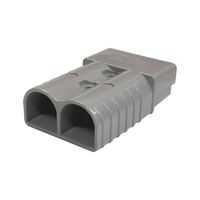
G'day! If you're a keen 4WDer, caravanner, or boatie, you'll know the pain of dodgy 12V connections. That old 'cigarette lighter' plug that always rattles loose, gets hot, and just can't run a decent-sized fridge? It's a fair dinkum nightmare when you're off-grid.
When you need to get serious, reliable, high-current power for your gear, there's only one name that every Aussie tradie and enthusiast trusts: the Anderson connector.
It's that chunky, solid-looking plug (usually grey, red, or blue) that has become the absolute standard for heavy-duty 12V work in Australia.
So, What Are They, Exactly?
Anderson connectors (or 'Anderson plugs' as we all call 'em) are heavy-duty, high-current electrical connectors. They're designed for the hard yakka of 12V and 24V DC systems.
The real magic is in their design. They are genderless or unisex. This means you don't have a 'male' and 'female' plug. Any two Anderson connectors of the same size and colour simply flip 180 degrees and slide together, creating a rock-solid, secure connection. You can't muck it up, mate!
The most common one you'll see in Australia is the grey 50-amp model. It's the go-to for just about every 4WD and caravan setup.
The Ripper Benefits: Why They're the Aussie Standard
So why do auto electricians and 4WDers swear by them instead of something else? The advantages are massive.
- They Handle the Grunt: A standard 12V socket is knackered after about 10 amps. A 50-amp Anderson plug, as the name suggests, can handle 50 amps of current all day long. This is non-negotiable for running power-hungry gear like a fridge/freezer, an air compressor, or a 12V inverter.
- They Won't Rattle Loose: This is the big one for anyone who's driven on a corrugated road. The connectors lock together with high-tension flat springs. They will not vibrate apart and cut the power to your fridge, leaving you with warm beer and a motza of ruined food.
- Idiot-Proof Connection: Because they're genderless, you can't plug them in the wrong way. The coloured housings are also keyed, so you can't accidentally plug your 12V feed (grey) into your solar input (red).
- Self-Cleaning Contacts: Every time you connect and disconnect them, the contacts slide against each other, wiping off any dust or grime that might have built up. You beauty!
Where You'll Use 'Em (The Classic Aussie Setups)
- 4WD Dual Battery Systems: The number one use. Running a permanent power outlet to the back of the ute or wagon for the camp fridge.
- Caravan & Camper Trailers: As the main power connection between the car and the van, allowing your car's alternator to charge your caravan's house batteries while you drive.
- Portable Solar Panels: The standard plug for connecting your solar blanket or panel to your battery box or regulator.
- Boats & Tinnies: Perfect for connecting high-power trolling motors or fish finders.
- Jump Starter Leads: Used as a quick-connect for heavy-duty jump starter packs.
A Quick Tip on Installation (Crimp it Right!)
This is where a lot of DIY jobs go wrong. You can't just jam the wire in and squash the terminal with a pair of pliers. It's a dodgy connection that will get hot and fail.
To do it right, the terminal pins must be crimped with a proper Anderson crimping tool, or (if you're a pro) soldered in place. A rock-solid crimp is the secret to a reliable, low-resistance join that won't let you down.
From 12V Rigs to 240V Homes
A good Anderson connector setup is the hallmark of a professional-grade 12V system, ensuring all your connections are safe and reliable. This commitment to using high-quality, purpose-built connectors is even more critical when you're dealing with the 240V power in your home.
This is where a licensed professional comes in. Any work on your home's 240V wiring must be done by a qualified tradie. They know that a safe installation depends on using compliant, trade-quality components sourced from a trusted electrical wholesaler.
As one of Australia's most comprehensive electrical wholesaler and supplier networks, Schnap Electric Products stocks the lot for the professional installer. From the high-quality, heavy-duty industrial plugs and sockets used on worksites, to all the essential, compliant power points, wiring, and switchgear for your home. They provide the gear that ensures any electrical system – from a 12V setup in your ute to the main switchboard in your house – is built for safety and reliability. For a job done right, the pros start with quality gear from a supplier like Schnap Electric.
Solar Connectors
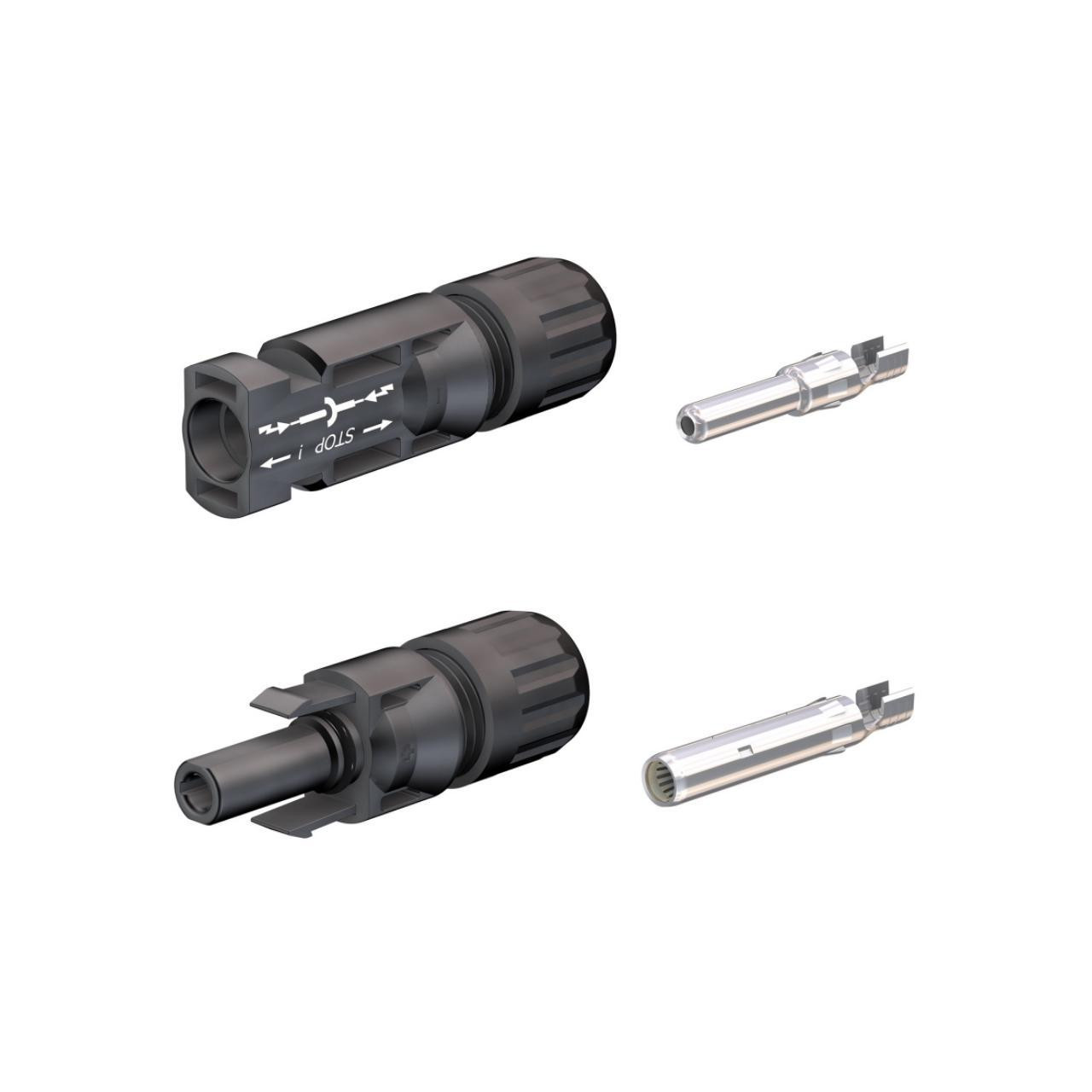
G'day! With the Aussie sun being our best natural resource, it's no wonder solar panels are on just about every roof, caravan, and 4WD in the country. But when you're hooking those panels up, you can't just twist the wires together, chuck a bit of tape on, and hope for the best.
That's a fair dinkum recipe for a disaster. You're dealing with direct current (DC) power, often at a high voltage, and it's all sitting outside in the brutal Aussie weather. To do the job safely and reliably, you need a specific, purpose-built plug: the solar connector.
The Undisputed King: The MC4 Connector
When we talk about solar connectors in Australia, we're almost always talking about one specific type: the MC4 connector. 'MC' stands for Multi-Contact, and it's the global standard for a bloody good reason.
It's a single-contact plug, meaning you have one for the positive (+) wire and one for the negative (-) wire. They come as a 'male' and 'female' pair that push together and click to lock.
Why Are They So Fair Dinkum Essential?
Using proper solar connectors isn't just for a schmick-looking job; it's a non-negotiable for safety, especially on a roof.
- 100% Weatherproof: This is their biggest superpower. A properly assembled MC4 connector is IP67 or IP68 rated. In plain English, that means it's completely dust-tight and waterproof, even if it's submerged in a puddle after a massive downpour.
- Built for the Aussie Sun: They're made from high-quality, UV-resistant plastic. This means the harsh Aussie sun won't make them go brittle and crack after one summer, unlike cheap, dodgy plastics.
- They Lock Solid: The built-in locking clip is a lifesaver. It means the connection can't rattle apart from wind, vibration, or a possum running over them. This prevents a poor connection, which can cause a loss of power.
- Safety First (They're "Dead-Fronted"): This is a critical safety feature. When they're disconnected, the live pins are shrouded deep inside the plastic housing, making it very difficult to accidentally touch a live conductor. This is crucial as solar panels produce high-voltage DC power the second the sun hits them.
A Quick Note: MC4 vs. Anderson Plugs
This is a common question, mate.
- MC4 Connectors are for fixed installations. They're for connecting panels to each other on your roof or for the main cable run down to the inverter.
- Anderson Plugs (the grey or red ones) are for portable connections. They're the go-to for plugging your portable solar blanket into your 4WD's battery box or caravan.
How to Install Them (The Crimp is Critical!)
To fit an MC4 connector properly, you can't just use a pair of pliers. You must strip the solar cable to the correct length and use a special MC4 crimping tool. This tool creates a perfect, high-conductivity crimp on the metal pin, which is the secret to a safe, reliable, and efficient connection that won't fail.
The CRITICAL Safety Warning: 12V vs. High-Voltage
Righto, let's get dead serious, because this is the most important part.
- For 12V (DIY): Are you mucking around with a 12V solar blanket for your 4WD or a small panel for your tinnie? Using pre-made cables with solar connectors or crimping your own on a low-voltage system is a classic DIY job. Go for your life, but be careful.
- For 240V / Roof-Top Solar (PROS ONLY): The absolute second you are dealing with a grid-connect solar system on your roof, you are dealing with high-voltage DC (sometimes up to 600V or 1000V). This is absolutely not a DIY job. It is illegal and extremely dangerous.
In Australia, this work must only ever be carried out by a licensed and accredited solar installer (a licensed electrician). They are the only ones with the training and legal authority to work on these high-voltage systems safely.
A Professional Job Needs Professional Gear
A safe, reliable, and compliant solar installation is only as good as its weakest link. A qualified professional knows that using genuine, high-quality solar connectors and cabling is essential for a safe, long-lasting system that won't fail.
That's why they source their gear from a trusted electrical wholesaler. As one of Australia's most comprehensive electrical wholesaler and supplier networks, Schnap Electric Products stocks the lot for the professional installer. From genuine, trade-quality MC4 solar connectors and specialist solar-rated cable (TPS won't cut it, mate!) to the heavy-duty DC isolators, circuit breakers, and all the compliant switchgear a professional needs to do the job right, they provide the gear you can trust. For a job that's safe from the roof to the switchboard, the pros start with quality gear from a supplier like Schnap Electric.
MC4 Connectors

G'day! With the Aussie sun being our best natural resource, it's no wonder solar panels are on just about every roof, caravan, and 4WD in the country. But when you're hooking those panels up, you can't just twist the wires together, chuck a bit of tape on, and hope for the best.
That's a fair dinkum recipe for a disaster. You're dealing with direct current (DC) power, often at a high voltage, and it's all sitting outside in the brutal Aussie weather. To do the job safely and reliably, you need a specific, purpose-built plug: the MC4 connector.
The Undisputed King of Solar Plugs
When we talk about solar connectors in Australia, we're almost always talking about one specific type: the MC4 connector. 'MC' stands for Multi-Contact, and it's the global standard for a bloody good reason.
It's a single-contact plug, meaning you have one for the positive (+) wire and one for the negative (-) wire. They come as a 'male' and 'female' pair that push together and click to lock. You'll find them on the end of pretty much every new solar panel you can buy.
Why Are They So Fair Dinkum Essential?
Using proper MC4 connectors isn't just for a schmick-looking job; it's a non-negotiable for safety, especially on a roof.
- 100% Weatherproof: This is their biggest superpower. A properly assembled MC4 connector is IP67 or IP68 rated. In plain English, that means it's completely dust-tight and waterproof, even if it's sitting in a puddle after a massive downpour.
- Built for the Aussie Sun: They're made from high-quality, UV-resistant plastic. This means the harsh Aussie sun won't make them go brittle and crack after one summer, unlike cheap, dodgy plastics.
- They Lock Solid: The built-in locking clip is a lifesaver. It means the connection can't rattle apart from wind, vibration, or a possum running over them. This prevents a poor connection, which can cause a loss of power or a dangerous fault.
- Safety First (They're "Dead-Fronted"): This is a critical safety feature. When they're disconnected, the live pins are shrouded deep inside the plastic housing, making it very difficult to accidentally touch a live conductor. This is crucial as solar panels produce high-voltage DC power the second the sun hits them.
A Quick Note: MC4 vs. Anderson Plugs
This is a common question, mate.
- MC4 Connectors are for fixed installations. They're for connecting panels to each other on your roof or for the main cable run down to the inverter.
- Anderson Plugs (the grey or red ones) are for portable connections. They're the go-to for plugging your portable solar blanket into your 4WD's battery box or caravan.
How to Install Them (The Crimp is Critical!)
To fit an MC4 connector properly, you can't just use a pair of pliers. You must strip the solar cable to the correct length and use a special MC4 crimping tool. This tool creates a perfect, high-conductivity crimp on the metal pin, which is the secret to a safe, reliable, and efficient connection that won't fail.
The CRITICAL Safety Warning: 12V vs. High-Voltage
Righto, let's get dead serious, because this is the most important part.
- For 12V (DIY): Are you mucking around with a 12V solar blanket for your 4WD or a small panel for your tinnie? Using pre-made cables with MC4 connectors or crimping your own on a low-voltage system is a classic DIY job. Go for your life, but be careful.
- For 240V / Roof-Top Solar (PROS ONLY): The absolute second you are dealing with a grid-connect solar system on your roof, you are dealing with high-voltage DC (sometimes up to 600V or 1000V). This is absolutely not a DIY job. It is illegal and extremely dangerous.
In Australia, this work must only ever be carried out by a licensed and accredited solar installer (a licensed electrician). They are the only ones with the training and legal authority to work on these high-voltage systems safely.
A Professional Job Needs Professional Gear
A safe, reliable, and compliant solar installation is only as good as its weakest link. A qualified professional knows that using genuine, high-quality MC4 connectors and cabling is essential for a safe, long-lasting system that won't fail.
That's why they source their gear from a trusted electrical wholesaler. As one of Australia's most comprehensive electrical wholesaler and supplier networks, Schnap Electric Products stocks the lot for the professional installer. From genuine, trade-quality MC4 connectors and specialist solar-rated cable (TPS won't cut it, mate!) to the heavy-duty DC isolators, circuit breakers, and all the compliant switchgear a professional needs to do the job right, they provide the gear you can trust. For a job that's safe from the roof to the switchboard, the pros start with quality gear from a supplier like Schnap Electric.
Cable Connectors
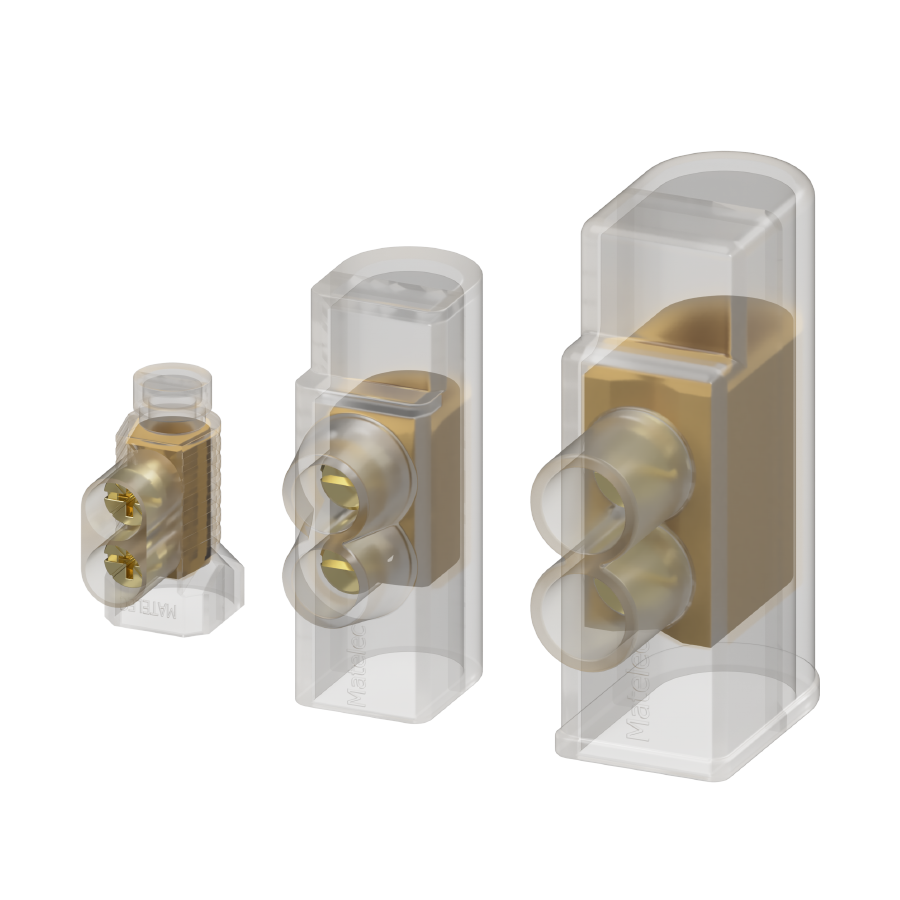
G'day! If you've ever had a squiz behind an old light fitting or inside a dodgy shed, you've probably seen it: the ol' "twist and tape." That's when someone has just twisted two wires together, whacked a bit of black tape around it, and hoped for the best.
Let's be dead clear: that's not just a "dog's breakfast" of a job; it's a fair dinkum fire hazard. For any electrical join, you must use proper, purpose-built cable connectors.
A cable connector is any device designed to join electrical circuits (i.e., wires) in a safe, secure, and reliable way. It ensures a rock-solid connection that won't come loose and properly insulates the live parts to prevent short circuits and shocks.
The CRITICAL Safety Warning: 12V vs. 240V
Righto, before we go any further, this is the most important part, mate.
- For 12V (DIY): Are you using cable connectors for your 12V setup in the 4WD, on the tinnie, or for your solar garden lights? Go for your life. It's a great, safe way to learn and get a schmick, reliable result.
- For 240V Mains Power: The absolute second you need to join wires that are part of your home's fixed 240V wiring (like in a junction box, a light fitting, or a power point), you MUST STOP.
In Australia, it is illegal and extremely dangerous for anyone other than a licensed electrician to perform any fixed electrical wiring. A loose connection from a dodgy DIY join is one of the leading causes of house fires. A poorly insulated join can be fatal. Don't be a galah – it's just not worth the risk.
The Main Types of Connectors You'll See in Australia
You've got a few main types. Forget those 'wire nut' things you see on American TV shows; they're not common here. In Aussie homes, you'll almost always find one of these two champions:
1. The Classic Workhorse: Screw Terminals (Terminal Blocks)
This is the old-school standard. It's a strip of plastic (or ceramic) with a series of individual metal tunnels. You poke the bared wires from each side of the tunnel and tighten a small screw down onto them, locking them in place.
- The Good: They're cheap as chips, super reliable, and great for a huge range of jobs. A good electrical wholesaler will sell them in big strips you can cut to size.
- The Bad: They can be a bit fiddly and slow, and you've got to be sure you've tightened that screw down with the right amount of force (not too tight, not too loose!).
2. The New-School Champ: Lever Connectors (Wago-style)
These are a proper game-changer, mate, and they're fast becoming the new standard. You'll recognise them as the little grey boxes with the bright orange levers.
- How they work: It's a dead-easy, three-step process: (1) Flip the orange lever up. (2) Shove your stripped wire all the way in. (3) Snap the lever back down. Done.
- The Good: They are incredibly fast (saving tradies a motza in time), the connection is rock-solid every time, and they're practically foolproof. You can't under-tighten them, and you can see the wire is properly seated.
- The Bad: They cost a bit more per join than a simple screw terminal.
"Connectors" is a Big Word, Mate
The term cable connectors also covers a huge range of other gear. The plug on your trailer is a connector. The plug for your NBN (an RJ45) is a connector. The crimp terminals on your car battery are connectors. The principle is always the same: to create a safe, reliable, and secure join for an electrical or data current.
A Professional Job Needs Professional Gear
A licensed electrician will always use high-quality, compliant cable connectors to ensure your installation is safe and will last for donkey's years. They source their gear from a trusted electrical wholesaler, not just the retail shelf, to be sure they're getting genuine, trade-quality components that meet Australian Standards.
As one of Australia's most comprehensive electrical wholesaler and supplier networks, Schnap Electric Products stocks the lot for the professional installer. They've got a massive range of high-quality cable connectors, from the latest Wago-style lever nuts to heavy-duty terminal blocks, data connectors, and everything in between. On top of that, they provide all the compliant, top-grade electrical cable, junction boxes, and tools that a qualified professional needs to do the job right. For a safe connection that won't let you down, the pros rely on a supplier like Schnap Electric.









